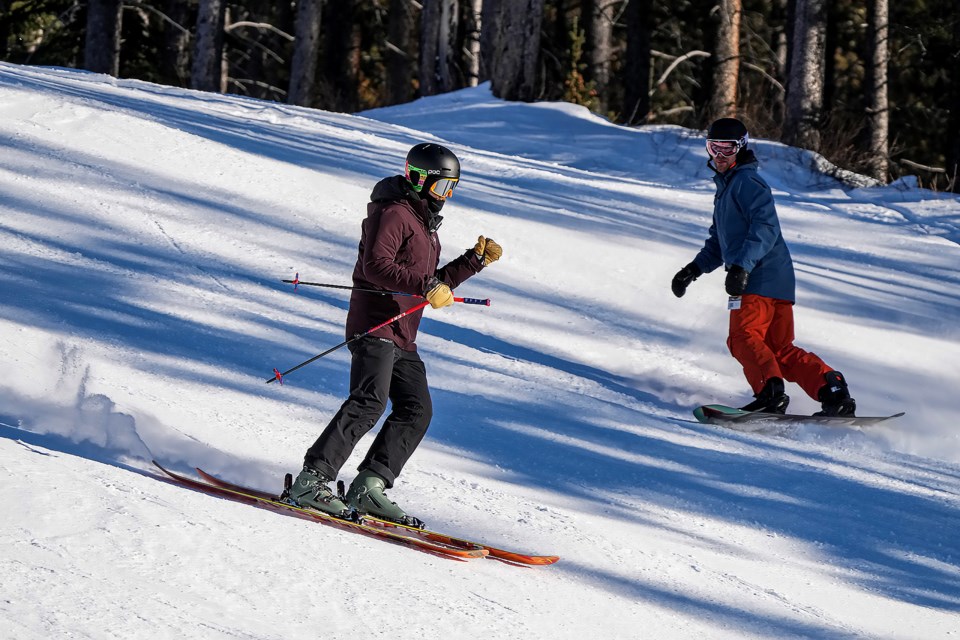BANFF – The winter snowpack in Banff National Park and Kananaskis Country is low to normal in many areas, but a leading climate expert says one or two big storms could bring the region back to normal levels.
John Pomeroy, Canada Research Chair in water resources and climate and the director of the University of Saskatchewan’s Coldwater Laboratory in Canmore, said the snowpack is lower than normal to normal, depending on the elevation and region of the Rockies.
“We had some major storms early in the winter that built up an above normal snowpack by late October, but a dry period since late December has put the snowpacks below normal, especially at lower elevations, since then in most locations,” he said.
Pomeroy, who is also the director of the University of Saskatchewan’s Centre for Hydrology, monitors approximately 35 stations located throughout Kananaskis Country, Banff National Park and through to the Athabasca Glacier in Jasper National Park.
He said mid-elevation snowpacks in Kananaskis Country are about 50 millimetres below normal in the central ranges and only 25 mm below normal in the higher elevations of the front ranges.
In Banff National Park, Pomeroy said Sunshine is 125 mm below normal and near Skoki is 75 mm below normal, but in the front ranges of the Red Deer basin the snowpack is above normal by 50 mm. Further south in the Oldman basin, the snowpack is closer to normal at mid-elevations.
“To put this in context, we would expect a normal snowpack of 400 mm at the Sunshine snow pillow right now but we have 275 mm, so being down 125 mm is quite substantial – about 69 per cent of normal,” he said.
“By early May we expect over 600 mm there – so there is still time for that snow to fall.”
The last few years have been high snowfall years, so Pomeroy said it is really noticeable how much lower this season is from recent ones.
“But it does not stand out as a low snowpack year when one considers all elevations,” he said.
“We must remember that we are only about halfway through the snow accumulation season and can expect a couple hundred more millimetres of snowfall before melt.”
One big storm could put the region back to normal conditions, he said.
“That said, the exceptionally warm conditions in the valley bottoms have sublimated or melted much of the snowpack that fell in late 2022 and that disturbs the winter habitat of many organisms, including humans who ski,” he said.
Meanwhile, the current avalanche hazard for Banff National Park varies throughout the park, with more snow falling in the northern parts of the region.
A storm brought about 20 cm of fresh snow in areas near Bow Summit on Highway 93 North and more snow was expected, pushing the danger rating to high on Wednesday (Feb. 8) in the alpine and above treeline in that region of the park. It was predicted to be considerable in the alpine and at treeline Thursday (Feb. 9) and Friday (Feb. 10). It remains moderate below terrain in that area of the park.
“Make conservative terrain choices and avoid overhead hazard,” states the avalanche bulletin. “If triggered, wind slabs avalanches may step down to deeper layers resulting in larger avalanches.”
In much of Kananaskis Country, the hazard levels reached high in the alpine on Wednesday, but were predicted to be considerable in the alpine, moderate in above treeline and low below treeline by Thursday and into Friday.
“Be aware of the potential for surprisingly large avalanches due to deeply buried weak layers,” states the bulletin.




